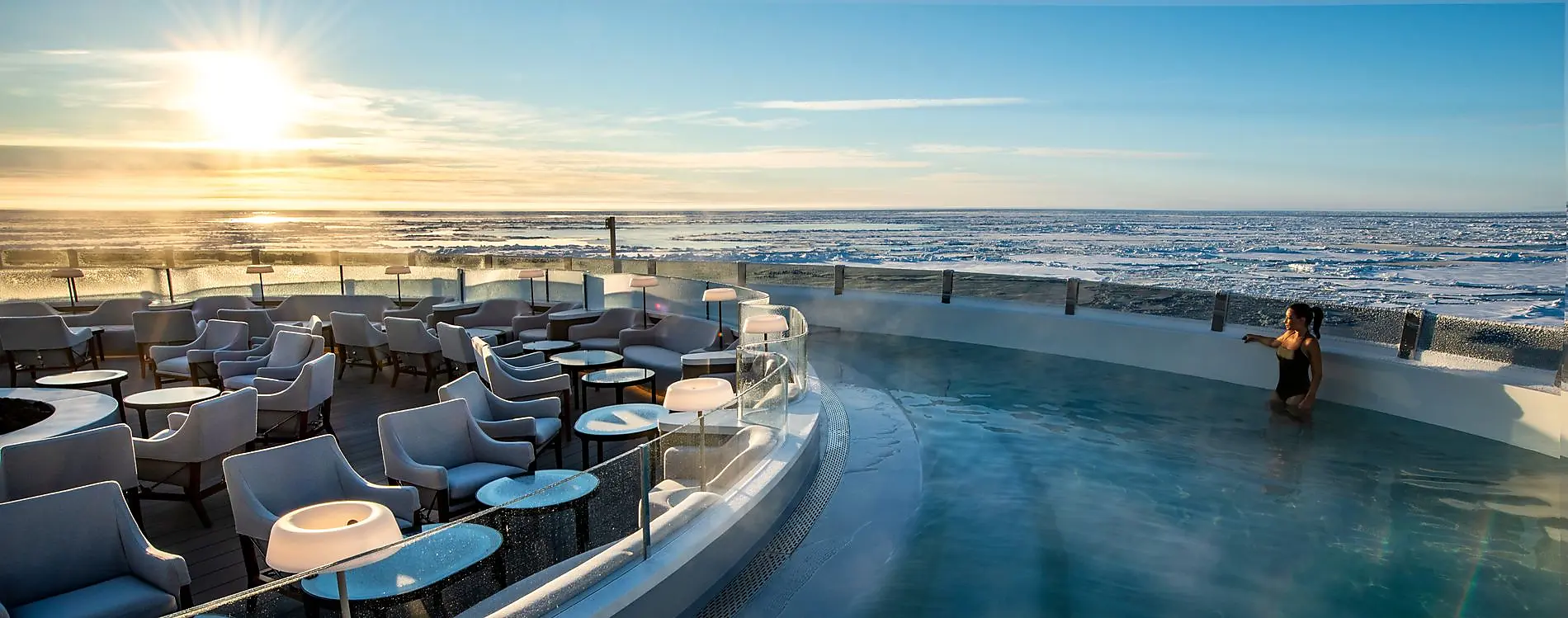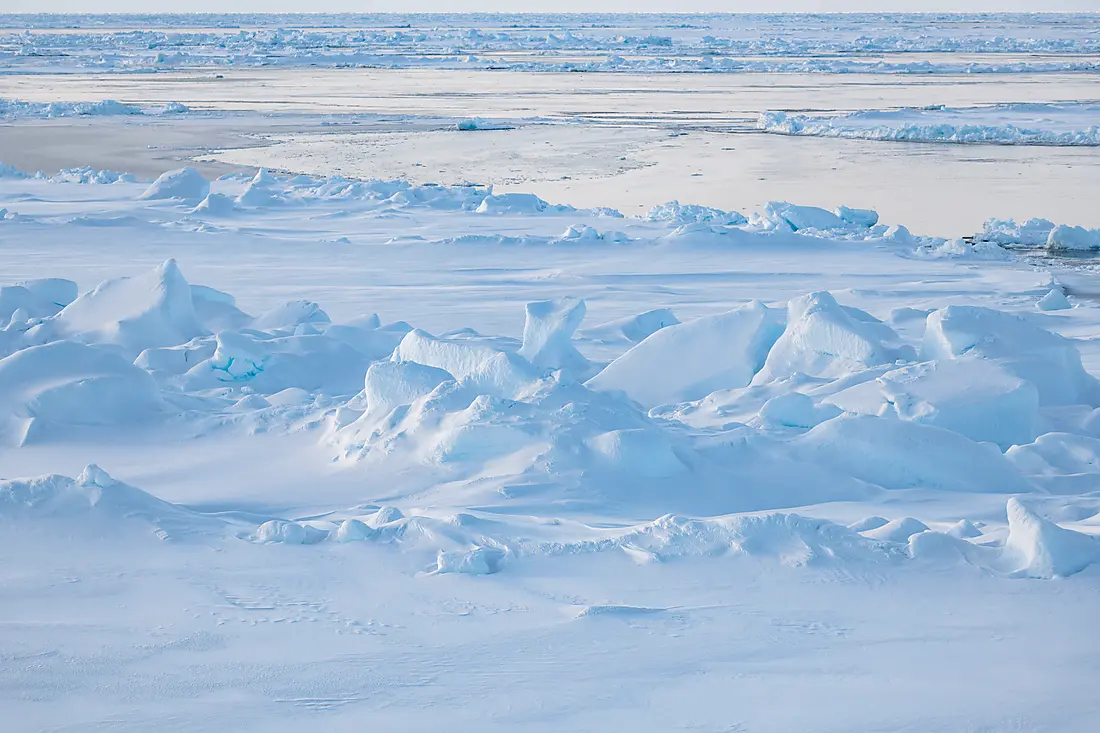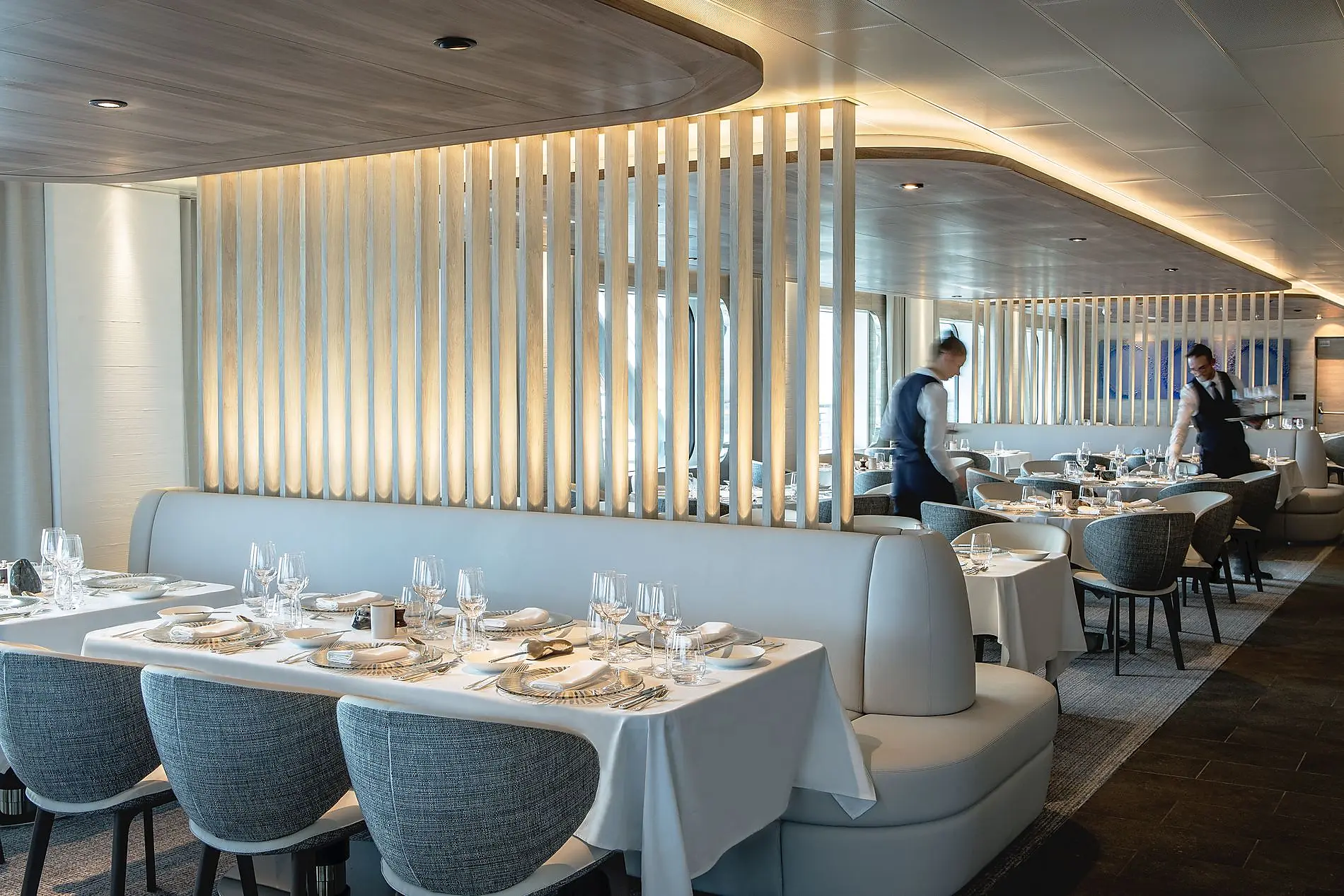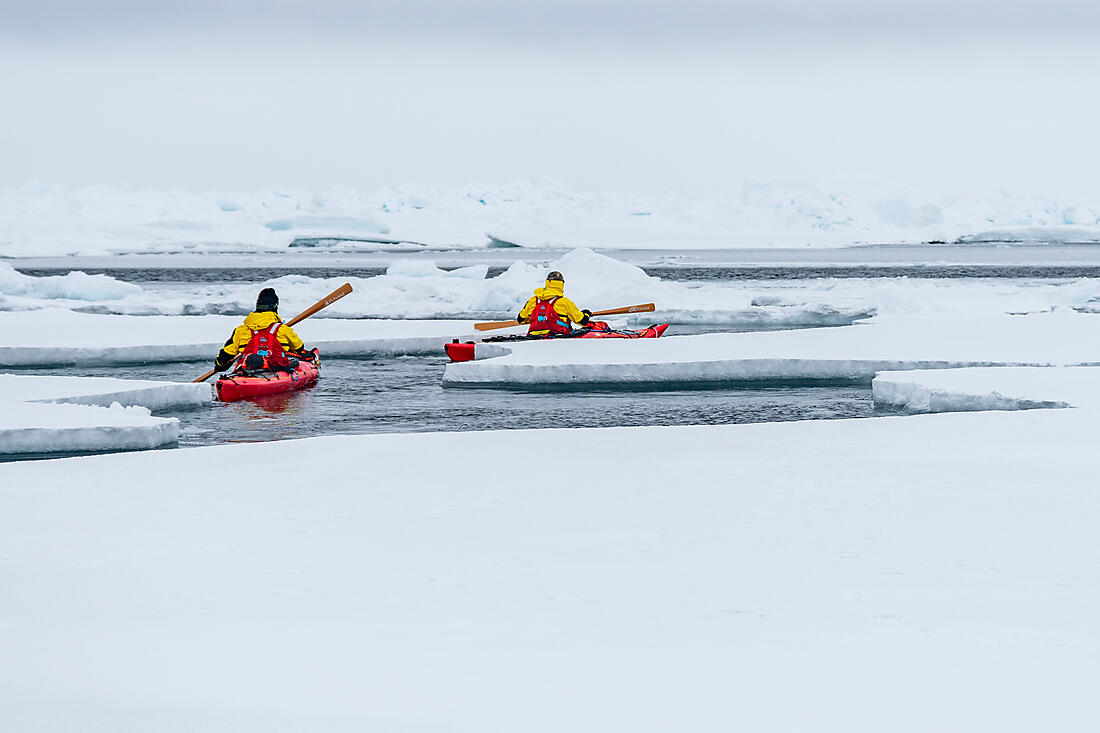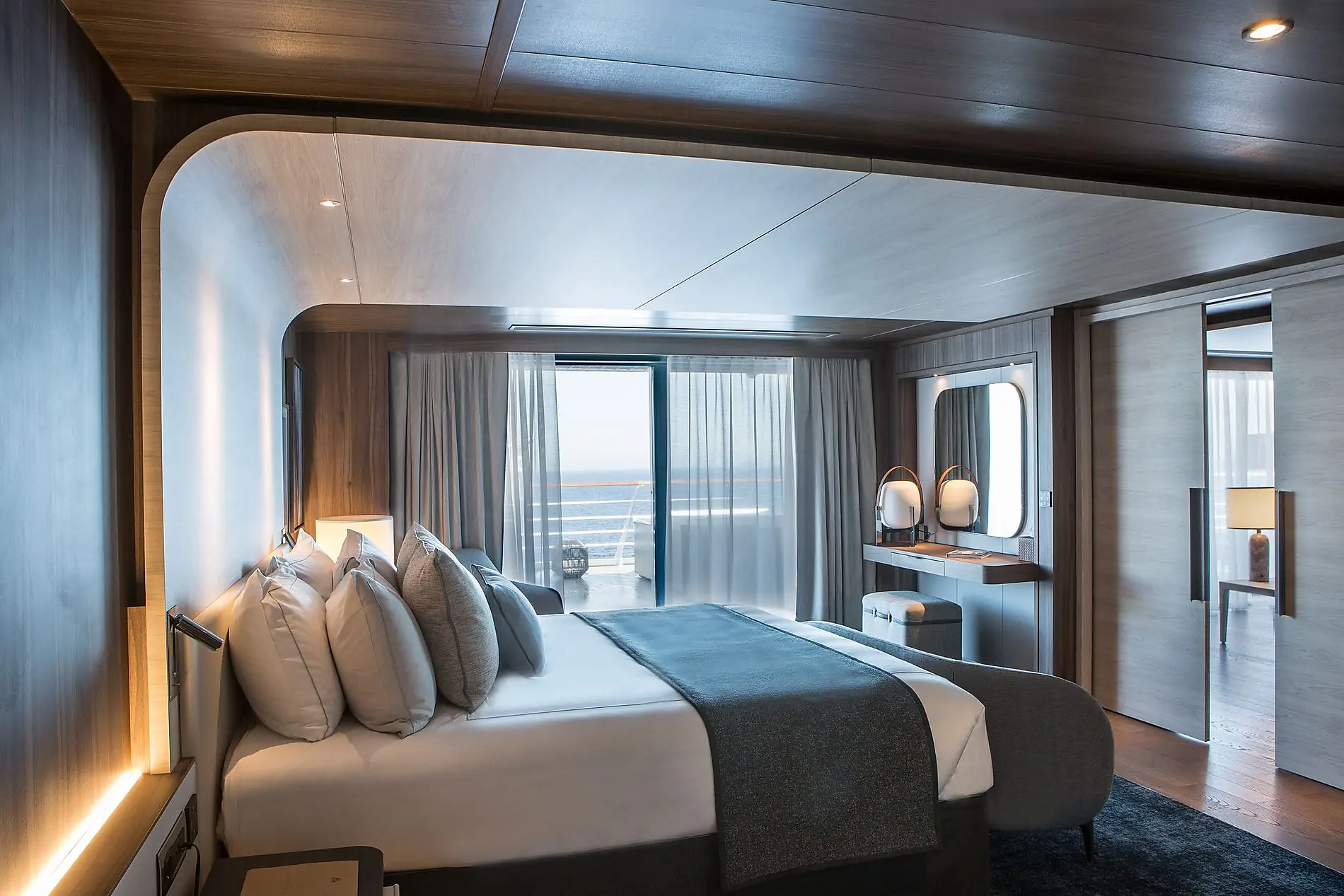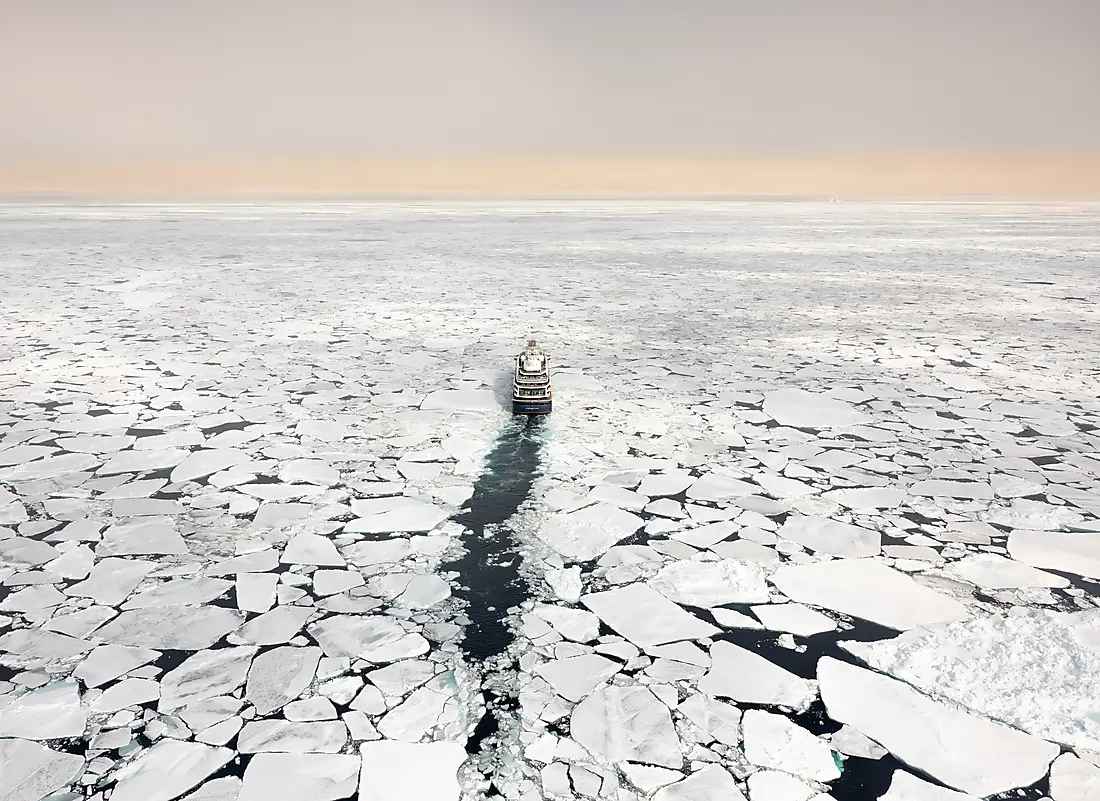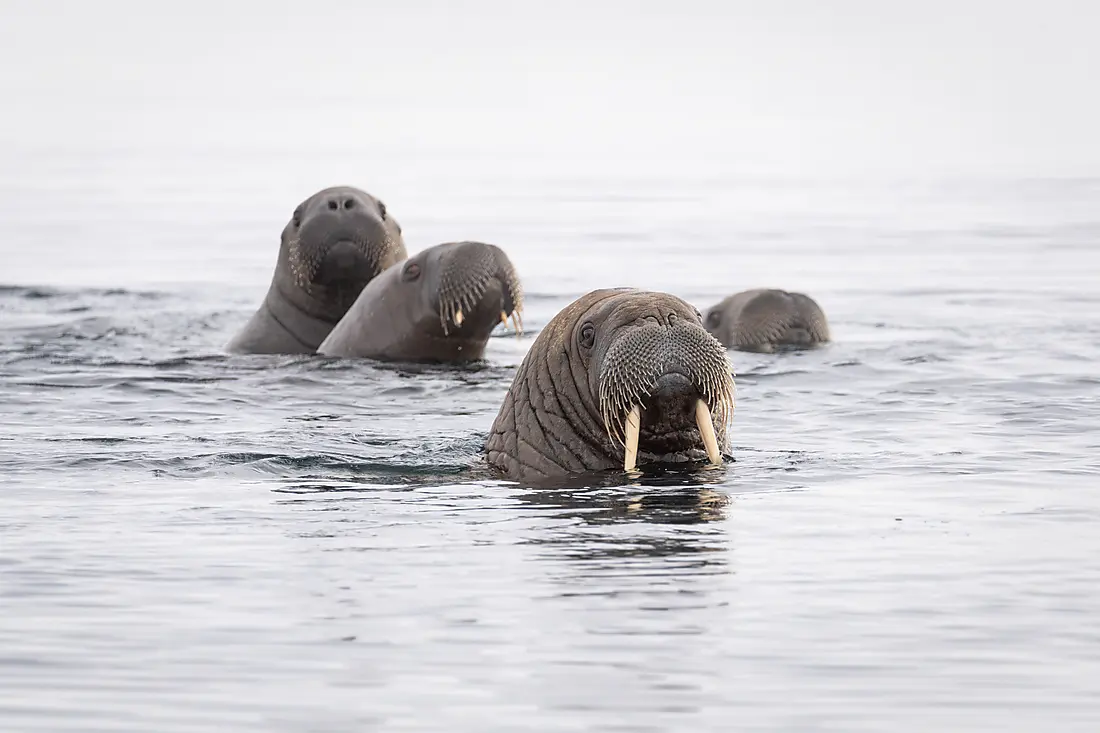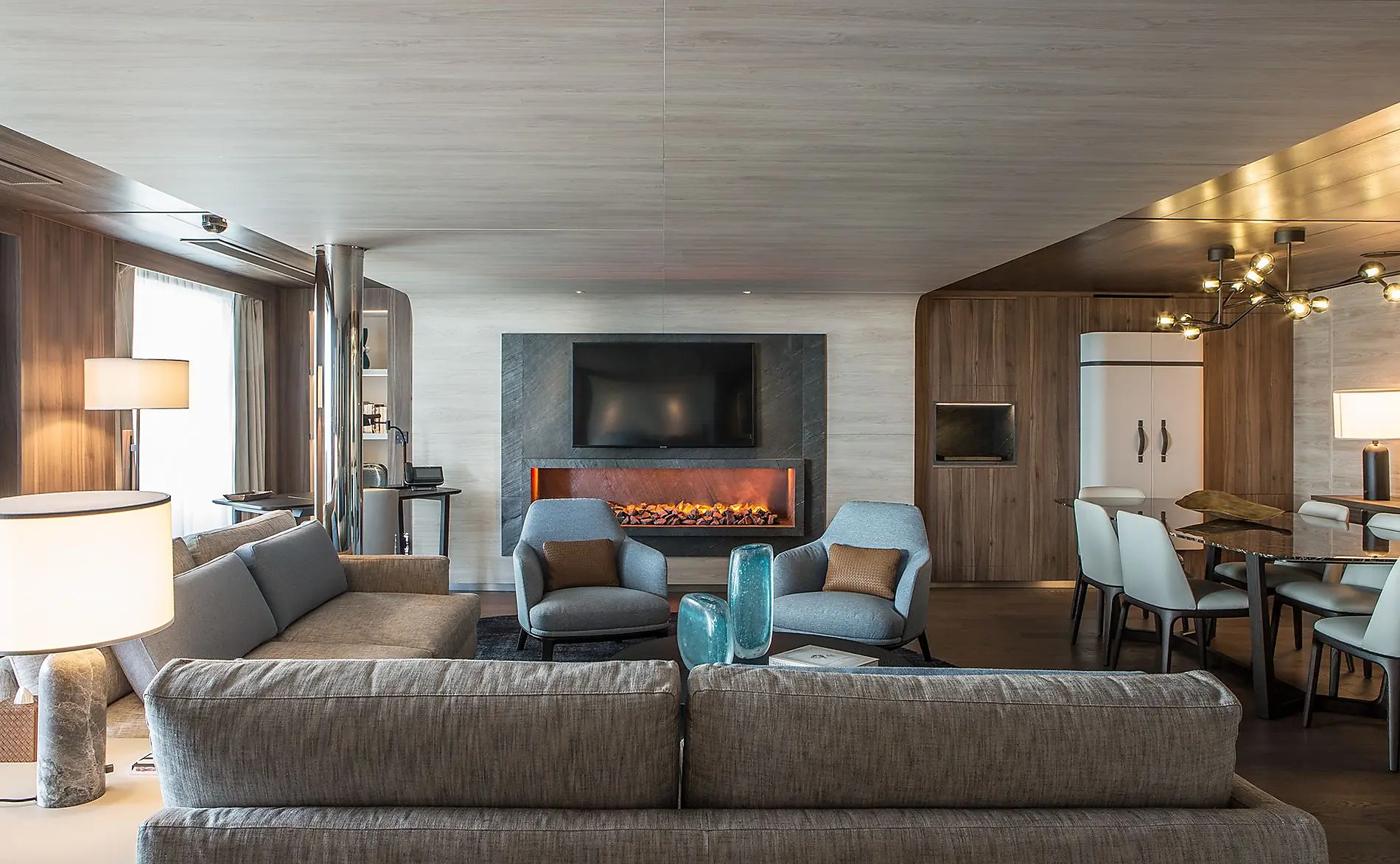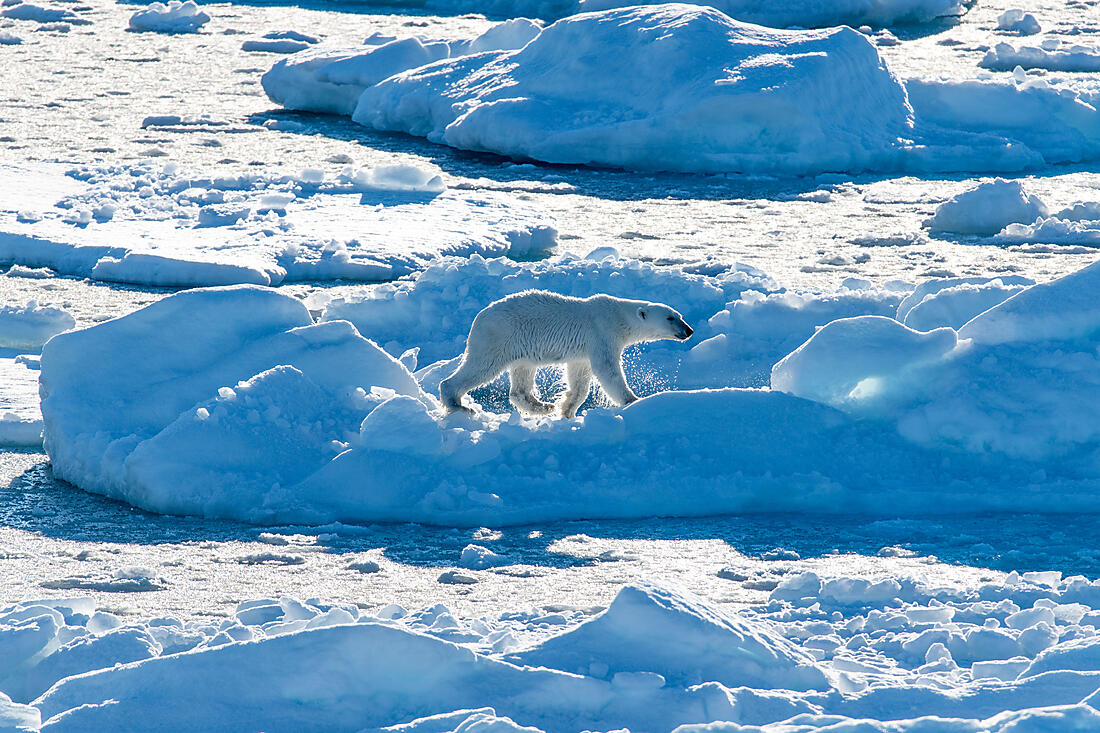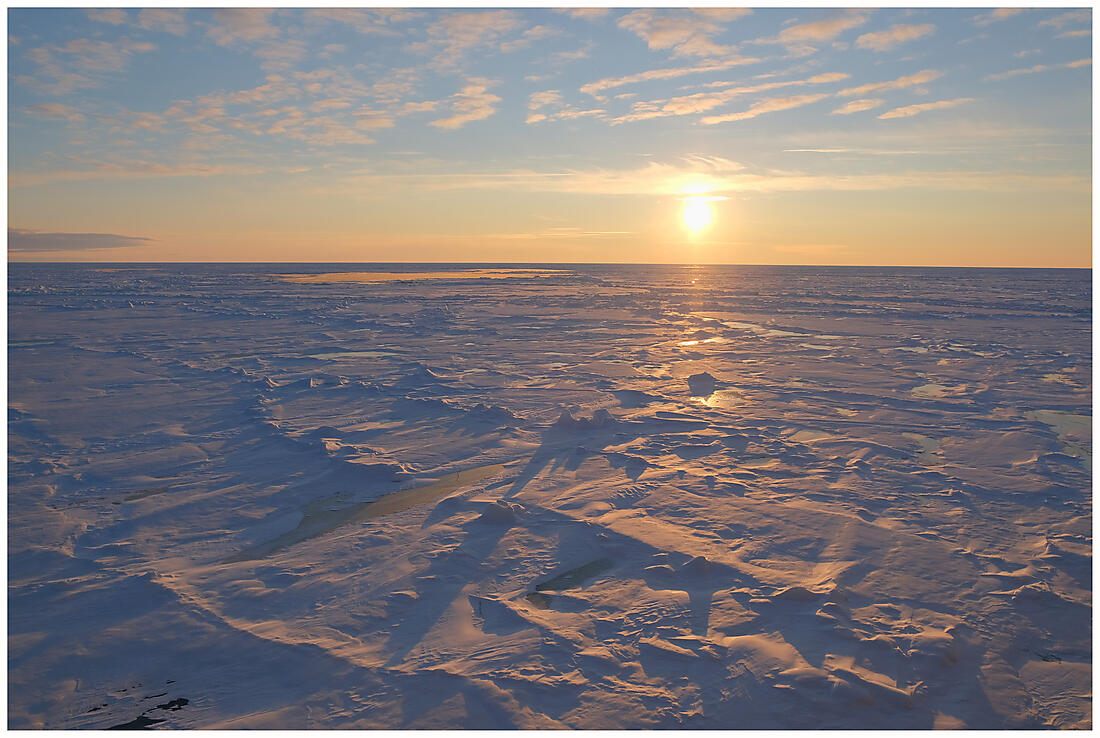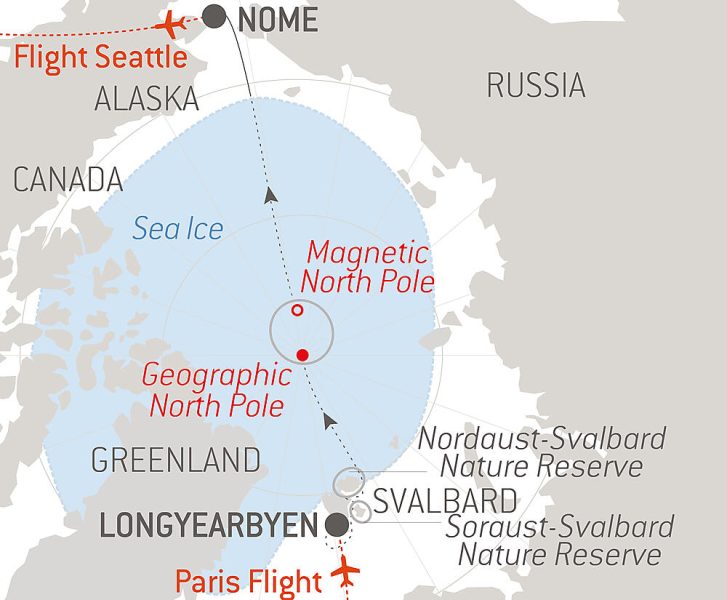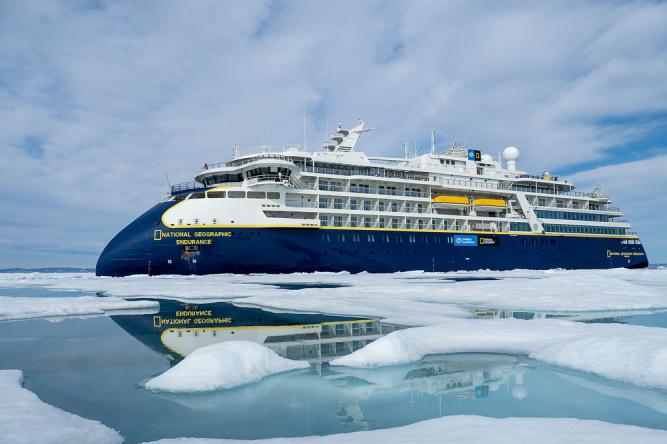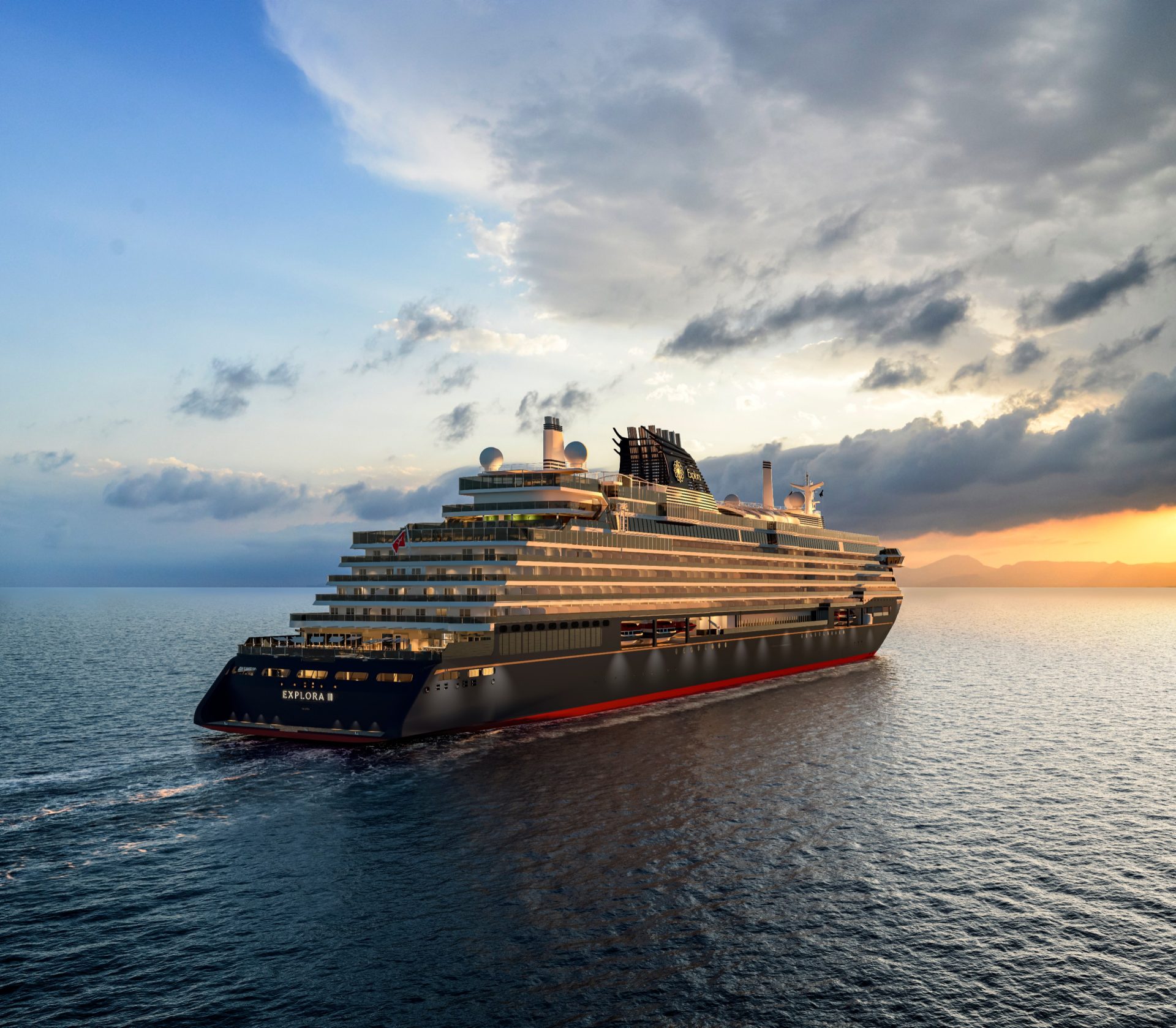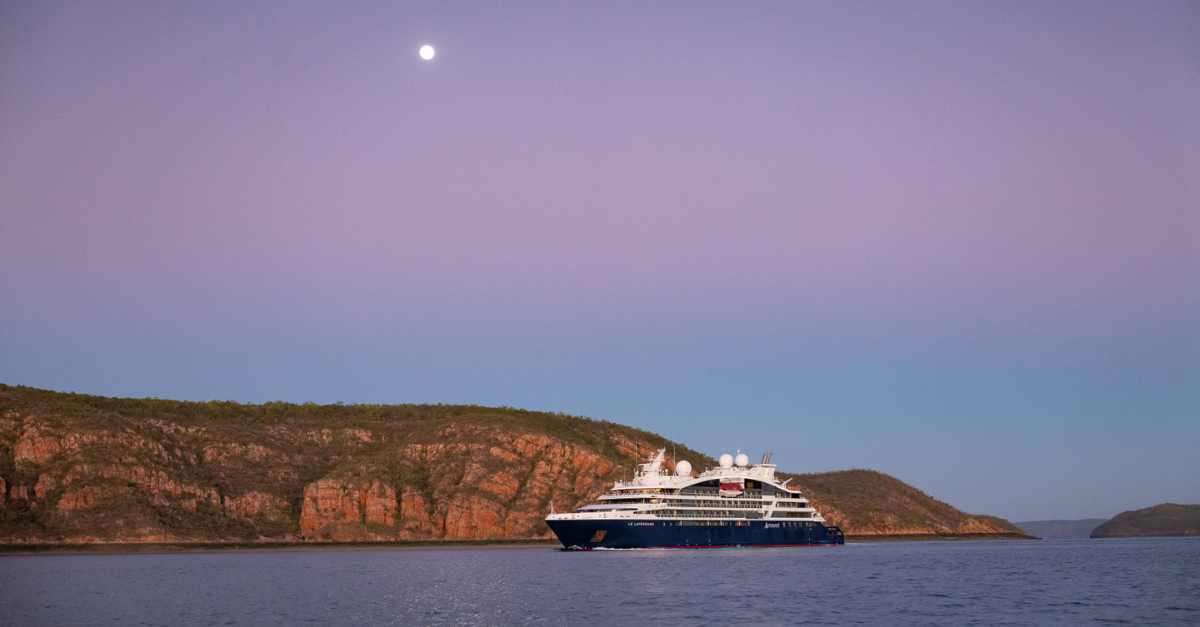DAY 1 – LONGYEARBYEN, SPITSBERGEN, NORWAY
Longyearbyen is the capital of the Norwegian Svalbard archipelago, located on Svalbard’s main island, and is the northernmost territorial capital on the planet. With winter temperatures dropping to below -40°C, the landscapes of this mining town are simply breathtaking. The glaciers, the mountains stretching as far as the eye can see and the untouched nature, make you feel like you’re in completely unexplored territory.
DAY 2 – ISFJORDEN, NORWAY
The vast Isfjorden is one of the main fjords in Svalbard. These different branches reach the heart of the island of Spitsbergen. Located deep inside the Billejforden, the Nordenskiöld Glacier with its front of ice, nearly 5 km wide, is one of the most spectacular in the Svalbard Archipelago.
DAY 3 – HORNSUND, NORWAY
Nestling between millennial glaciers and carved mountains, and considered to be “the crown of Arctic Norway”, Spitsbergen is a place that never sees the night. Your ship will take you closer to this fascinating archipelago and, more particularly, the Hornsund fjord. Considered to be Svalbard’s southernmost fjord, it is especially reputed to be its most stunning: at the end of its vast bay, 8 great glaciers slowly make their way down to the sea before giving way to the many icebergs elegantly drifting along its cold and mysterious waters.
DAY 4 – SORAUST – SVALBARD NATURE RESERVE, NORWAY
The Søraust-Svalbard Nature Reserve is the second largest protected area in Norway. It will offer you stunning panoramas including coastal landscapes, rocky islets, mountain plateaux, vast tundra plains, and ice floes. With a little luck, you will be able to observe a wide variety of seabirds, given the site is listed as an Important Bird Area, as well as cetaceans, Svalbard reindeer, or even Arctic foxes. Among other things, Edgeoya Island is renowned for providing shelter to a number of polar bears during the breeding season.
DAY 5 – SAILING IN THE HINLOPEN STRAIT, NORWAY
Sailing in the Hinlopen Strait, in the heart of the Arctic Ocean, between the Norwegian islands of Spitsbergen and Nordaustlandet promises an unforgettable experience. This territory of the Nordaust-Svalbard Nature Reserve offers breathtaking panoramas, with magnificent basalt formations and the ice cap stretching as far as the eye can see, diving into the sea.
DAY 6 – NORDAUST – SVALBARD NATURE RESERVE, NORWAY
The Nordaust-Svalbard Nature Reserve has been protecting the northernmost and coldest part of the archipelago, Nordaustlandet (North East Land), since 1973. This vast polar desert covered by two ice caps is the second largest island in the Svalbard archipelago. Protected by the Gulf Stream, the fjords and cliffs in the west and north are home to large colonies of birds and walruses.
DAY 7 TO 9 – NAVIGATING THROUGH THE SEA ICE
Enjoy the absolutely unique experience of sailing to the heart of the ice floe, this vast expanse of virgin, immaculate ice. The landscapes are constantly changing, shifting from a smooth, flat wilderness to a chaos of ice, then to channels of open water. Your ship will sail along these naturally open channels and through the areas where the frozen layer is thinnest, offering you the chance to experience magic maritime moments in the midst of drifting sea ice. It will also often be an opportunity to see a particular kind of fauna, totally dependent on the ice floe.
DAY 10 – MAGNETIC NORTH POLE
The convergence point for the field lines of the Earth’s magnetic field, the Magnetic North Pole attracts the magnetic needle of the compass. While the Geographic North Pole is the Earth’s northernmost fixed point, marking the intersection of the Globe’s rotation axis with the Earth’s surface, the Magnetic North Pole moves over time. In fact, it is linked to the Earth’s magnetic field which originates in the Earth’s outer core, which is made up of molten metal and is subject to convection movements. Localised for the first time in 1831, in the Canadian Arctic, it has since moved towards Siberia and thus become closer to the Geographic North Pole. Set off in search of the Magnetic North Pole, try to get closer to it and, if luck allows it, attempt to reach it!
DAY 11 – EXPLORING SEA ICE IN BEAUFORT SEA
Bordering the north coasts of Alaska and Canada, the Beaufort Sea was feared for centuries because of its extreme climatic conditions. Covered for most of the year with a thick layer of ice, and unexplored until 1914, this part of the Arctic Ocean, named in honour of the British Admiral Francis Beaufort, will reveal its magnificent icy landscapes to you. With a bit of luck, maybe you will cross the path of some polar bears, since the region is renowned for sheltering the Lord of the Arctic.
DAY 12 – GEOGRAPHIC NORTH POLE
Defined by a 90° North latitude, the Geographic North Pole lies on the Earth’s rotational axis, at the intersection of all meridians. Plunged into darkness for six months of the year, then lit by the sun for the following six months, this mythical site, permanently covered in ice and remote from any land, has fascinated generations of explorers. So far, only a very few people have ever reached it: an exploit which is now accessible to you aboard Le Commandant Charcot.
DAY 13 TO 20 – EXPLORING SEA ICE IN BEAUFORT SEA
Bordering the north coasts of Alaska and Canada, the Beaufort Sea was feared for centuries because of its extreme climatic conditions. Covered for most of the year with a thick layer of ice, and unexplored until 1914, this part of the Arctic Ocean, named in honour of the British Admiral Francis Beaufort, will reveal its magnificent icy landscapes to you. With a bit of luck, maybe you will cross the path of some polar bears, since the region is renowned for sheltering the Lord of the Arctic.
DAY 21 – NOME, ALASKA
Located along the Bering Strait at the westernmost point of Alaska, Nome offers the rustic charm of a former gold-mining town, set in the middle of magnificent wilderness. As you weave in and out of the brightly coloured houses, you will discover the pioneering legacy that still marks local traditions. Fishing, reindeer rearing, sledge-racing… People here live from their manual labour. The surrounding plains provide stunning vantage points for observing Arctic fauna.

